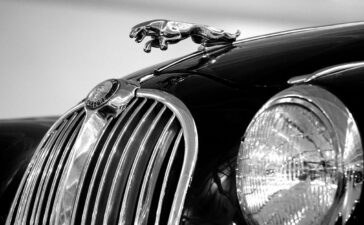Motorcycles have been around for more than a century and have become a popular mode of transportation worldwide. If you are planning to ride a motorcycle or just want to learn more about them, understanding the parts of a motorcycle is essential. In this article, we will take a closer look at the basics of motorcycle parts and their functions.

The engine is the heart of the motorcycle and is responsible for converting fuel into motion. It comes in various sizes and configurations, but the most common are single-cylinder, twin-cylinder, and four-cylinder engines. Each cylinder has a piston that moves up and down to create power that drives the wheels. The engine being the centre of all motorcycle parts, also includes a carburettor or fuel injection system, which is responsible for mixing the air and fuel in the right proportions before combustion.
If you’re a motorcycle enthusiast, then you know that keeping your engine in top shape is crucial for optimal performance. At your local motorcycle parts store, you can find a variety of components for your engine, including spark plugs, oil filters, and air filters. Additionally, if you need to replace your carburettor or fuel injection system, the knowledgeable staff at the motorcycle parts store can help you find the right parts for your specific make and model. With the right components and regular maintenance, your engine will continue to power your motorcycle for years to come.
The frame is the backbone of the motorcycle and is responsible for supporting the weight of the rider and other components. It is usually made of steel, aluminium, or carbon fibre and consists of various parts such as the main frame, subframe, swingarm, and steering head. The frame also includes suspension components, which help to absorb shocks and keep the wheels in contact with the road.
The wheels and tires of the motorcycle are crucial components that not only generate traction but also maintain the vehicle’s stability. The wheels have a hub, spokes, and rim, and the tires are composed of rubber. The sizes and forms of the tires change depending on the type of motorbike that is being ridden. It is necessary to maintain the correct inflation levels in the tires in order to achieve optimal performance, as the tires play a significant role in delivering traction on a variety of road conditions.
Brakes are essential safety components of a motorcycle because they allow the rider to control the speed of the vehicle and bring it to a halt when necessary. Drum brakes and disc brakes are the two kinds of braking systems that can be found on bikes. Drum brakes are more common. Disc brakes are more common in current motorcycles and are more effective than drum brakes, which are more common in older models of motorcycles. Disc brakes work by clamping down on the wheel with the help of a rotor and a calliper to generate friction, which in turn slows the motorcycle down.

The ignition, the lights, and any other electronic components on the motorcycle are all powered by the electrical system. This system is also responsible for the horn. It consists of a battery, an alternator, and a wiring harness that is responsible for connecting all of the components together. While the engine is turned off, electricity is provided by the battery; however, when the engine is operating, the alternator is responsible for charging the battery and providing power to the electrical system.





